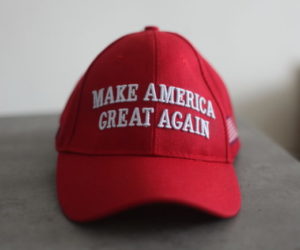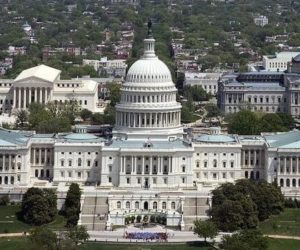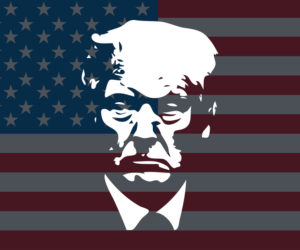“Nothing’s Farfetched These Days,” “Impossible, you say?”
With these forewarnings, Jonathan Alter takes the reader through a lengthy and rather complex — some will say “improbable” — path to “How Michael Bloomberg Becomes President.”
Note that Alter says “becomes,” not “could become.”
Note that the title of this piece is “How Bloomberg Won,” not “Why Bloomberg Could Win” or “How Bloomberg Could Win.”
Note that Alter’s piece is dated January 20, 2017.
But before looking at Alter’s scenario, here is his assessment on Bloomberg today, February 23, 2016.
I hear from sources close to former New York Mayor Michael Bloomberg that he will almost certainly run for president as an independent if Republicans nominate Donald Trump and Democrats nominate Bernie Sanders. With Hillary Clinton’s victory in the Nevada caucuses, the latter is increasingly unlikely but still plausible, as is Bloomberg’s election.
Alter then looks back at how Bloomberg managed to capture the presidency of the United States after “an insane election year.”
This is the timeline according to Alter (I am drastically condensing and paraphrasing it):
In March 2016, when Bloomberg saw that “Trump and Sanders were on track to be nominated by the Republicans and Democrats,” he saw a path running as “an unprecedented blend of insider and outsider—representing elites but smashing the two-party status quo that voters despised.”
On the Republican side, around mid-March, Trump all but eliminated the last three contenders, Cruz, Rubio and Kasich. “By then the die was cast on the Republican side, though Americans and millions watching around the world still had to slap themselves to prove they weren’t dreaming.”
On the Democratic side, in mid-March, “as Bloomberg had to decide whether to file for ballot positions in all 50 states, Hillary’s campaign was rocked by fresh news on the fallout from her handling of highly classified emails…in order to maintain its integrity, the Obama DOJ issued a stinging interim report that let Sanders re-open an issue he had closed in 2015.”
Alter then describes the impact of a 60 Minutes appearance by Juanita Broaddrick “to tell her version of the alleged Bill Clinton rape story from back in 1978,’ and, poof, that is the last he writes on Hillary Clinton.
After announcing his candidacy, Bloomberg begins spending “some of the $1 billion he had promised in January of 2016 to devote to a race.” At an estimated net worth of $40 billion (trumping “Trump’s pile”) Bloomberg can afford it and “neutralizes” trump’s claim to “being the only candidate who couldn’t be bought.”
After Bloomberg flooded the airwaves “while Sanders and Trump husbanded their resources for the fall,” the numbers changed and gave Bloomberg a lead by summer.
The Republican and Democratic conventions are both PR disasters…
Trump chooses New Mexico Gov. Susan Martinez as his running mate “to lessen the damage of his immigration views.” Sanders doubles down by selecting Massachusetts Sen. Elizabeth Warren and Bloomberg picks former Secretary of State Colin Powell, who helps “draw African-Americans and mainstream Republicans.”
As the campaign moves on, Bloomberg’s “socially liberal and fiscally conservative pragmatic positions more often put him in closer tune with the broad electorate than either Trump or Sanders…His views on guns, abortion, and gay rights—nearly indistinguishable from those of Sanders, Clinton, and other Democrats—hardly disqualified him in blue states and most swing states.”
Bloomberg draws support from both parties…
Bloomberg easily wins all three of the fall debates…
Election Day brings “a rough three-way split, with Trump winning ‘the Gun Belt’ (Deep South, border states, small Western Republican states), Sanders carrying liberal Democrats and young people, and Bloomberg doing well enough in cities (just as he had won in liberal New York) and crucial swing-vote suburbs to win several large states and the popular vote. Trump finished second and Sanders third.”
The 2016 election was reminiscent of 2000—too close to call. With no candidate receiving the necessary 270 electoral votes, the first post-election test was whether “faithless electors” (electors who vote differently from their states, as allowed under the Constitution) would emerge to tip the balance. That didn’t happen, but in December enough electors did buck their states’ preference to set a precedent for members of the House to do so when the election went there.
“In the House… after it was clear Sanders couldn’t win, House Minority Leader Nancy Pelosi convinced all Democrats to vote for Bloomberg…Just enough Republicans in swing districts in states that voted for Bloomberg (e.g., Pennsylvania, where his suburban strength carried him) succumbed to pressure that they vote the way their districts and states did…Enough conservatives decided that it would be better for their movement and party to render the Trump nomination a bad dream and try again with a real conservative in 2020. Otherwise, they feared, Trump would remake the GOP as a centrist party for good.”
And that is how Michael Bloomberg became president of the United States. Colin Powell was easily elected vice president by the Senate.
Alter concludes:
Bloomberg and Powell will launch their “non-partisan” administration today in a spirit of hope after the craziest election in American history.
Impossible you say? Time will tell…
Relax, sit down, have a cup of coffee, enjoy a red (for Trump), blue (for Sanders) or white (for Bloomberg) cookie and read the long, detailed, fascinating piece here.
Lead image: www.shutterstock.com

















